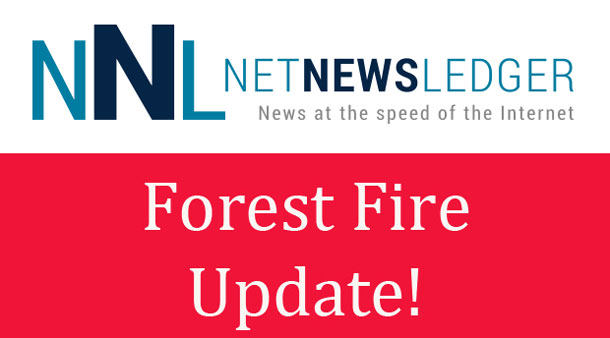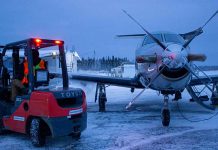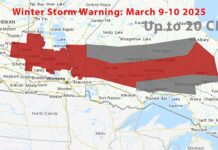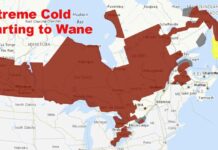THUNDER BAY – There were two new fires in the Northwest Region by the early evening of June 8.
- Thunder Bay 8 was located 25 kilometres west of Thunder Bay adjacent on the Hwy. 102 travel corridor. The 0.5 hectare fire is now out.
- Red Lake 19 is located approximately 34 kilometres south of Red Lake near Dixie Lake. The 0.5 hectare fire is not under control.
There are five active fires in the Northwest Region at the time of this update, there were all not under control.
Sioux Lookout 8 near Pickle Lake
Sioux Lookout 8 near Pickle Lake remains sized at 781.2 hectares and is not under control. Cloud cover helped keep fire behaviour low yesterday helping 14 crews construct fire breaks and hose lines on critical areas of the fire nearest the community and continued protecting structures with sprinkler systems as a precautionary measure. An Incident Management Team will assume command of the fire on Sunday.
Red Lake 14 near Pikangikum
Red Lake 14 near Pikangikum received approximately 15 mm of rain overnight, helping 23 ground crews make further progress in their efforts to contain the fire. At the time of this update the fire was not under control.
Fire hazard extreme in parts of region
The forest fire hazard is currently high to extreme in portions of the Northwest Region including Fort Frances, Dryden, Sioux Lookout, Thunder Bay and Nipigon sectors. The Red Lake sector features a low to moderate hazard.
AFFES staff deployed out of province
Approximately 230 staff members from Aviation, Forest Fire and Emergency Services are assisting the province of Alberta with its escalated fire situation. This includes FireRangers, support staff and one incident management team. In addition, the Ministry of Natural Resources and Forestry is providing equipment such as pumps, hose and hand tools to support Alberta.
More than 50 staff members from Aviation, Forest Fire and Emergency Services have been deployed to assist the Yukon with current active forest fires. This includes FireRangers and support staff.
There are also an additional 2 support staff members from Ontario who have been deployed out of province, one to assist the Canadian Interagency Forest Fire Centre in Winnipeg, and one to the Northwest Territories.
The sharing of resources across Canada is facilitated by the Canadian Interagency Forest Fire Centre in Winnipeg under the Mutual Aid Resource Sharing agreement.
The fire situation in Ontario has been relatively quiet since the beginning of the 2019 fire season, and we remain fully prepared to respond to any forest fires that may arise here at home.
Help prevent forest fires
Adopt safe campfire practices! Choose the site of your campfire carefully and keep your fire small. Stay nearby: never leave it unattended. Put your fire out by drowning it with water. Be sure that it is extinguished prior to leaving the site. Stir the ashes with a stick to uncover hot coals and then drown it again. You can never be too safe.
Consider alternatives to burning brush or yard waste, such as chipping or composting when possible, or saving burn piles for the fall or after the fire season. Use of outdoor fires must follow the outdoor burning rules set out in the Forest Fire Prevention Act of Ontario. Fires are to be started no sooner than two hours before sunset and extinguished no later than two hours after sunrise. Fires should never be left unattended and tools and water should be close at hand to put the fire out. More details on outdoor burning regulations can be found online at Ontario.ca/forestfire
To see a complete list of fires across the province click on our interactive map. You can also get the latest update on the condition of any fire by clicking the fire icon.
Fire numbers and online information:
- Forest Fire Reporting Number – 310-FIRE (3473)
- Twitter account
Report prepared by Chris Marchand








